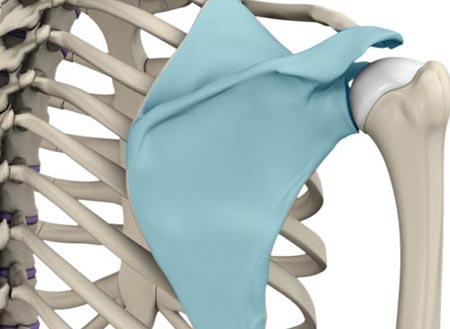In the realm of general shoulder function, the need for appropriate scapular (or shoulder blade) mechanics is vital. If the scapulas are not tracking or moving normally when the arms are raised and lowered, a patient is likely to experience pain, crepitance, and even a sense of instability. The term for this abnormal motion of the scapulas is called ‘scapular dyskinesis.’
Scapular dyskinesis can be identified on clinical examination of a patient upon watching the scapulas move during active motion of the arms. Visible ‘winging’ of the scapulas, or the bone elevating from the chest wall rather than lying flush, can be appreciated by the trained eye. This can be compensatory and the result of true shoulder pathology that is causing the body to accommodate with altered mechanics. It can also develop independently of other pathology over time. Rarely, it is related to a pinched nerve.
Fortunately, scapular dyskinesis is most often treated successfully without surgery. Formal physical therapy has been the mainstay of treatment for quite some time. Working with a physical therapist to specifically re-train the surrounding musculature to control the scapulas is the basis of the treatment.
A relatively new product has come to market to help further facilitate treatment of scapular dyskinesis. A company called Alyve Medical Inc. has developed a unit called Neuralign System STM (formerly called the Shoulder Pacemaker). This device is an electro-stimulator that is applied to the patient during therapeutic exercise to help stimulate the involved muscles. It is designed to help recruit and retrain muscles that are not firing appropriately to promote natural scapula mechanics, using a computer to do so. This device, in conjunction with the guidance of a physical therapist, helps patient develop correct scapular mechanics which subsequently alleviates the pain that comes from this dysfunction.


